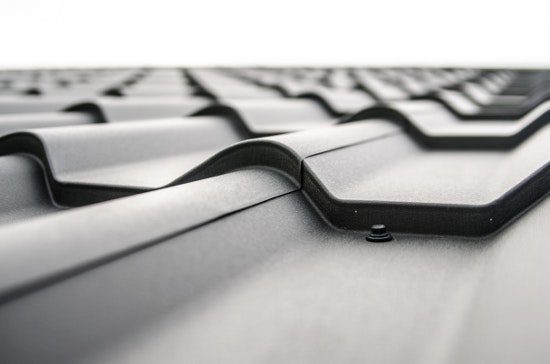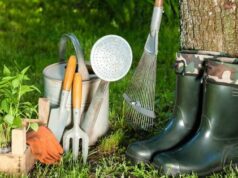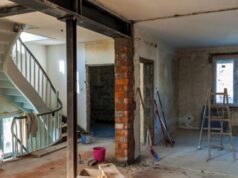When it rains, it pours, especially if you live in a home with leaky roof problems! There are few more unpleasant discoveries than coming home after a rainy day to an interior soaked with water. Even worse is when you realize rainwater has been coming into your home for days or weeks, slowly destroying the structure and threatening its inhabitants. If you have noticed signs that your roof might be leaking, take action as soon as possible. In some cases, leaks can be fixed with minimal effort. However, in other instances, hidden damage or other serious concerns may require a professional’s services before the problem worsens.


How To Find Roof Leaks
If you’ve already determined that your roof is leaking, you’ll want to find the source of the leak so that you can begin repairs as soon as possible. Finding leaks early gives you time to make necessary repairs before the leak causes severe damage. There are several ways to find leaks in your roof. First, you can visually examine your roof to look for discoloration or water stains. You can also listen for dripping water and walk around your house with a bucket to check for pooled water. If you want a more thorough way to check for leaks, you can use a roof leak detection tool. There are a few different leak detection tools, such as electricity leak detectors, smoke leak detectors, and infrared leak detectors.
Step 1: Check For Visible Signs Of Water Damage
Inspect the areas of your home that are most often exposed to water — the basement and garage, and the areas of the home near the exterior walls or yard. You may find stains or mildew near the foundation. If there are watermarks on the walls or ceilings, this could be a sign of a roof leak. Look closely at all the shingles, gutters, and other exterior parts of the roof that you can see. If there are broken shingles, missing shingles, or loose shingles, this could be a sign of a severe problem. You may also notice puddles on the roof. If you find any of these signs, you will want to take action to fix the leak as soon as possible to prevent further damage.
Step 2: Check For Hidden Leaks
Sometimes a leak can’t be seen from the ground or the roof. It’s estimated that over half of all roof leaks are hidden leaks. These leaks are inside the roof decking and are often difficult to detect. Hidden roof leaks are also the most dangerous because they can rot the roof framing and cause expensive damage that’s difficult to repair. A hidden roof leak may have been caused by a broken flashing, a loose shingle, or a spot where a nail or screw has come loose. You may be able to find a hidden roof leak by using a stethoscope or a bucket filled with water. The stethoscope will allow you to listen for air bubbles caused by water movement. The bucket of water is a great way to track down drips that can originate from a hidden roof leak.
Step 3: Contact A Roofing Expert
If you find any water penetration damage or signs, you should call a roofing company as soon as possible. Roofing is a specialized trade that requires special skills and tools. Roofers will be able to spot signs of problems more quickly than you and have the necessary equipment to repair any severe issues. If you find a leak but aren’t sure how bad it is, it’s best to call a roofing company to assess the damage. Roofers can tell you if you have any serious issues that need to be repaired immediately or if you can wait a while before fixing them. Sometimes, a small leak may need to be fixed immediately, while a more extensive leak can be deferred until the spring or summer. They can also come out and place roofing tarps on your roof until someone can come out and fix the damage.
Step 4: Check The Roof Ventilation
If you’ve recently experienced a sudden and frequent increase in the amount of water that appears inside your home, you may have a roof leak. But there could also be a reason for these leaks that has nothing to do with your roof’s condition. Often, the problem is that your roof isn’t getting enough air circulation. If your roof isn’t properly vented, it can trap in water, spores, and debris, eventually rotting the roofing materials. This can cause problems like bulging roofs, leaks, and fire hazards. So before you call a roofer to repair a leak, ensure the roof is adequately vented. Look around your roof to see if there are any visible roof vents. If you don’t see any vents on your roof, you may need to have a roofer install them as soon as possible.
Step 5: Ensure No Electrical Outlets Or Appliances Will Suffer Water Damage
Water damage to electrical wiring and equipment can be dangerous and even deadly. If you notice water in your home, you will want to unplug any appliances that could be damaged by water. This includes your refrigerator, freezer, microwave, coffee maker, toaster, blender, and other small appliances. But you will also want to unplug any electrical outlets near a water source. This is especially important if there is water in the basement, as water can work its way up through the ground and enter the electrical system from below. You’ll also want to unplug any outlets near water sources more likely to be coming in from the outside, such as the roof or gutters.
Conclusion
The roof of your home is a critical part of the structure, and any problems with this part of the house will only worsen over time, potentially causing thousands of dollars in damage. Don’t wait for a leaky roof to worsen or for a sudden downpour to reveal a problem. You can take these five steps to ensure that you address any potential issues with your roof as soon as possible, preventing a much more severe problem in the future.









